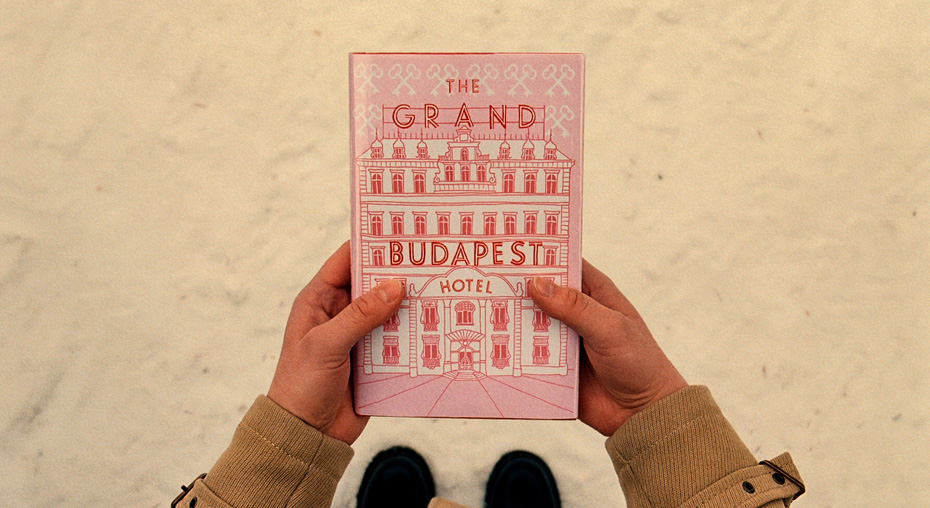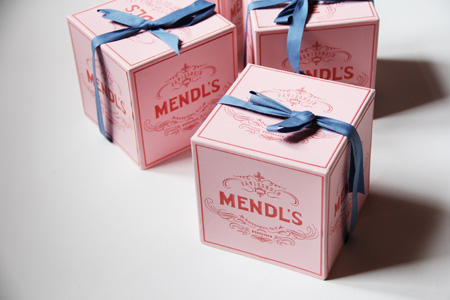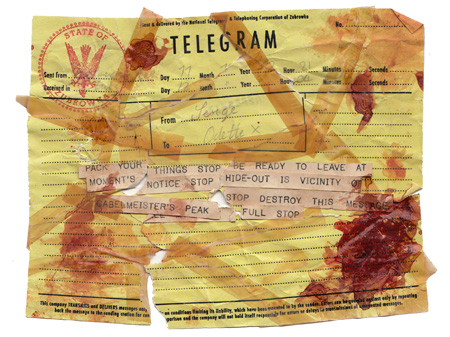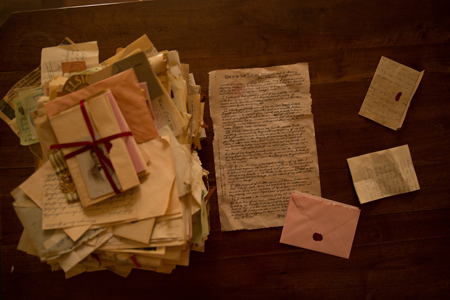The graphic designer on Wes Anderson’s fervent imagination and why advertising wasn’t for her

Annie Atkins doesn’t like to live in the here and now, at least not in her professional life. As the lead graphic designer on Wes Anderson’s The Grand Budapest Hotel, she was in her element. “I love period stuff. If not period, then something futuristic,” she tells me, following a Q&A with a small, enraptured but terribly hung-over crowd on the second morning of the Drop Everything festival in Ireland. “I love the Harry Potter movies. I love that mix of old and magical. I love Tim Burton movies… anything where you can bring a bit more imagination to it, like Wes’s films.”
Atkins and her team were responsible for all the graphics on The Grand… including all the signage and numerous small props such as handwritten letters and newspapers, to banknotes and prison wall graffiti. They were based upstairs in the same art nouveau department store – in Görlitz on the Germany/Poland border – used for many of the hotel interior shots.



“Our offices were on the top floor, that’s unusual,” says Atkins with a smile. “Usually you work in offices that are very separate from the set. Everyday we’d be working up there and we’d be able to look down over the balcony and see the set come to life. It was really nice to feel like you were a part of it.”
Annie stuns her audience during the Q&A by revealing how every single story in the newspapers that appear in the film was written word for word by Wes Anderson – usually copy would be pulled from Wikipedia – evidence of his notorious attention to detail.
“Wes is 100% hands on in every single department,” she says. “It’s really important when you’re making graphics for a film that you can actually see and hold your references. If you look at things on screen, you don’t really have a feel for the scale of things, or the kind of paper they were printed on. You actually need proper documents. We started in Berlin and went to all the old museums there. The DDR Museum has great stuff from 1960s Berlin, so many surviving documents from that time. The props guys got us loads of boxes of old military documents and police paperwork to study.”
“I thought I was leaving design behind, I thought it was design I didn’t like. When I went to film school, I realised it was design I loved, it was just a different world of design”
Intriguingly, prior to enrolling at University College Dublin to study film in 2007, Atkins spent four years in Reykjavík working in advertising. “It was 2003 so it was the height of the boom,” she says. “I went over with my portfolio and loved it. They were hiring like crazy; advertising was really big even though it’s a small island. I got a job as a junior graphic designer and at the end of four years I was an art director.
“It was great, but advertising wasn’t really for me. A lot of the time when people leave advertising they say they don’t like it, but really I think it means you’re not very good at it – I wasn’t very good at it. I thought I was leaving design behind, I thought it was design I didn’t like. When I went to film school, I realised it was design I loved, it was just a different world of design.”
I ask Atkins if there’s an inherent contradiction in film graphics, in that in order to succeed, they mustn’t stand out. “It depends on the film, “ she says with authority. “If you’re making something that’s very much about realism they shouldn’t catch the eye because it’s all about the actors and the story, these are just things that help create the world around them. If your eye’s drawn to a graphic, it’s probably because there’s a spelling mistake. With Wes’ films he uses the graphics themselves as storytelling devices; he uses them in close-up. It’s a very different way of working.”
Given the passion and work Atkins puts into her craft, one suspects she prefers it that way.
The Grand Budapest Hotel is out on DVD 7 July




